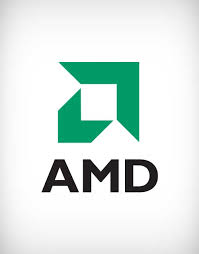Blockchain technology has become a buzzword in recent years, especially in the realm of cryptocurrencies like Bitcoin and Ethereum. However, the concept of blockchain goes beyond just digital currencies, and has the potential to revolutionize various industries.
So, what exactly is blockchain technology?
At its core, a blockchain is a decentralized digital ledger that records transactions in a secure and transparent way. It is essentially a database that is spread across a network of computers (nodes), where each node has a copy of the entire ledger. Every time a new transaction is added to the blockchain, it is validated and confirmed by the network of nodes, making it virtually impossible for anyone to tamper with the data.
The technology was originally invented in 2008 by an anonymous person (or group of people) known as Satoshi Nakamoto, as a way to facilitate transactions between individuals without the need for intermediaries like banks. However, the potential applications of blockchain technology have since expanded to a range of industries beyond finance.
How does blockchain work?
At the heart of the blockchain is the concept of “blocks” – each block contains a set of transactions that have been validated and confirmed by the network of nodes. When a new block is added to the blockchain, it is “chained” to the previous block, creating a permanent record of all the transactions that have occurred.
The process of adding a new block to the blockchain is called “mining”. This involves a complex mathematical algorithm that requires a significant amount of computational power to solve. The first node to solve the algorithm is rewarded with a certain amount of digital currency (depending on the blockchain), and the new block is added to the chain.
Once a block has been added to the blockchain, it is extremely difficult (if not impossible) to alter the data. This is because each block contains a unique “hash” – a cryptographic code that is generated based on the data in the block. If anyone tries to alter the data in a block, the hash will also change, and the network of nodes will reject the new block.
Advantages of blockchain technology
One of the main advantages of blockchain technology is its decentralized nature. Unlike traditional databases, where the data is stored on a central server controlled by a single entity (such as a bank), the blockchain is spread across a network of nodes, making it much harder for any one entity to control or manipulate the data. This also means that there is no single point of failure – if one node goes down, the rest of the network can still function.
Another advantage is the transparency and security of the blockchain. Because each transaction is validated and confirmed by the network of nodes, it is very difficult (if not impossible) for anyone to manipulate the data. This makes the blockchain ideal for industries that require a high level of transparency and security, such as finance, supply chain management, and healthcare.
Potential applications of blockchain technology
While blockchain technology was originally developed for digital currencies like Bitcoin, its potential applications have since expanded to a wide range of industries. Here are just a few examples:
Finance – Blockchain technology has the potential to revolutionize the financial industry by making transactions faster, cheaper, and more secure. Banks and financial institutions are already exploring the use of blockchain for everything from cross-border payments to trade finance.
Supply chain management – The blockchain can be used to track products as they move through the supply chain, ensuring transparency and security at every stage. This can help to prevent fraud, reduce waste, and improve efficiency.
Healthcare – The blockchain can be used to securely store and share medical records, making it easier for patients to access their own data and for healthcare providers to share information with each other. This can improve patient outcomes and reduce healthcare costs.
Real estate – The blockchain can be used to securely store and transfer property titles, making it easier to buy and
sell real estate. This can also help to prevent fraud and streamline the process of transferring property ownership.
Voting – The blockchain can be used to create secure and transparent voting systems, ensuring that each vote is counted accurately and that there is no tampering with the results.
Energy – The blockchain can be used to create peer-to-peer energy trading systems, allowing individuals and businesses to buy and sell excess energy from renewable sources.
Challenges and limitations of blockchain technology
While blockchain technology has the potential to revolutionize various industries, there are still some challenges and limitations that need to be addressed. One of the main challenges is scalability – as the blockchain grows larger, it becomes more difficult and resource-intensive to validate transactions. This can result in slower transaction times and higher transaction fees.
Another challenge is the energy consumption required for mining new blocks. Because mining requires a significant amount of computational power, it can consume a lot of energy, which can be a concern for the environment.
Finally, there are still some limitations to the use of blockchain technology in certain industries. For example, the healthcare industry may face regulatory hurdles in terms of data privacy and security, while the real estate industry may face challenges in terms of legal recognition of blockchain-based property titles.
Blockchain technology has the potential to revolutionize various industries by providing a secure, transparent, and decentralized way of storing and sharing data. While there are still some challenges and limitations to be addressed, the potential benefits are significant. As more businesses and organizations explore the use of blockchain technology, we can expect to see new and innovative applications emerging in the years ahead




